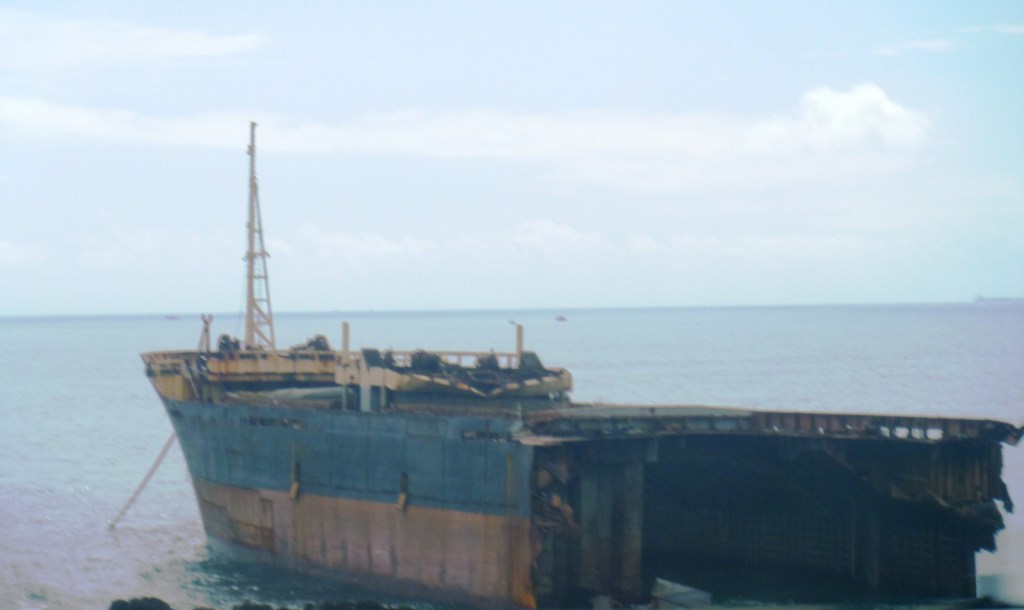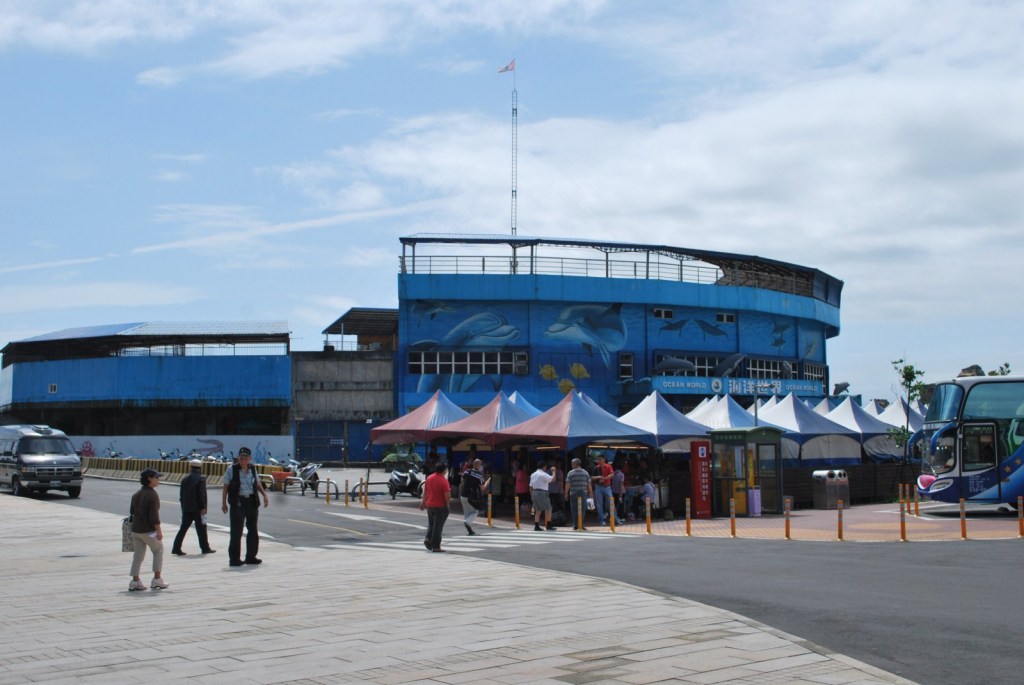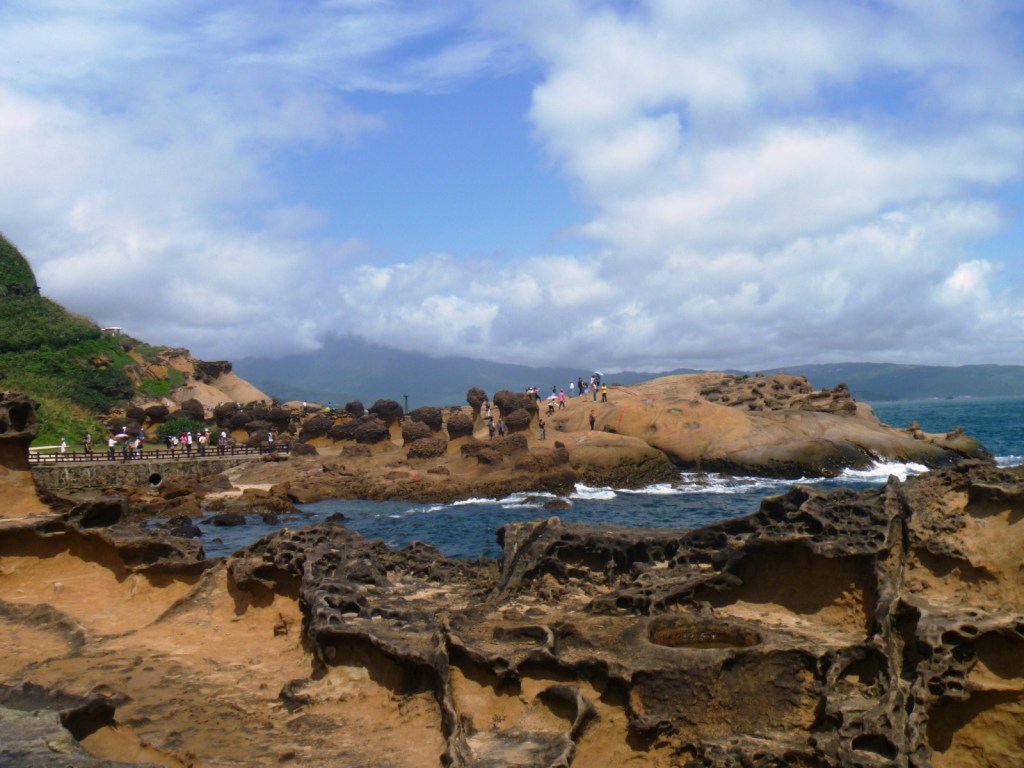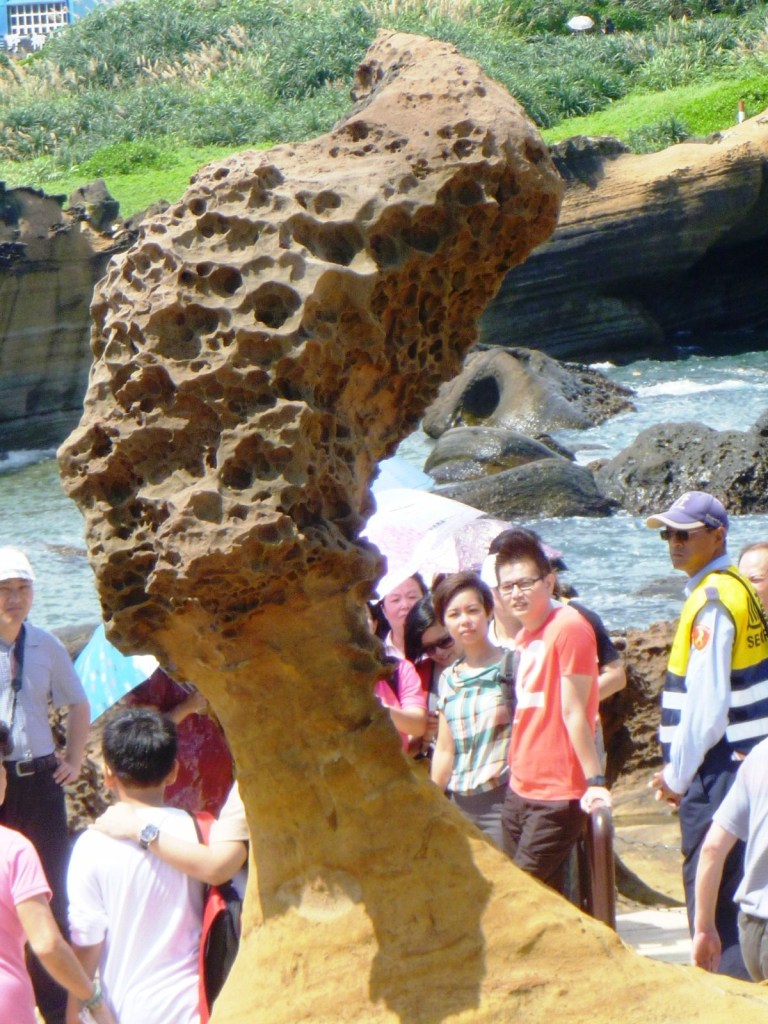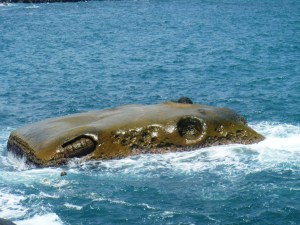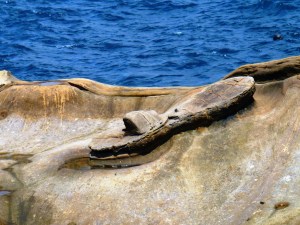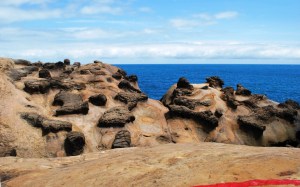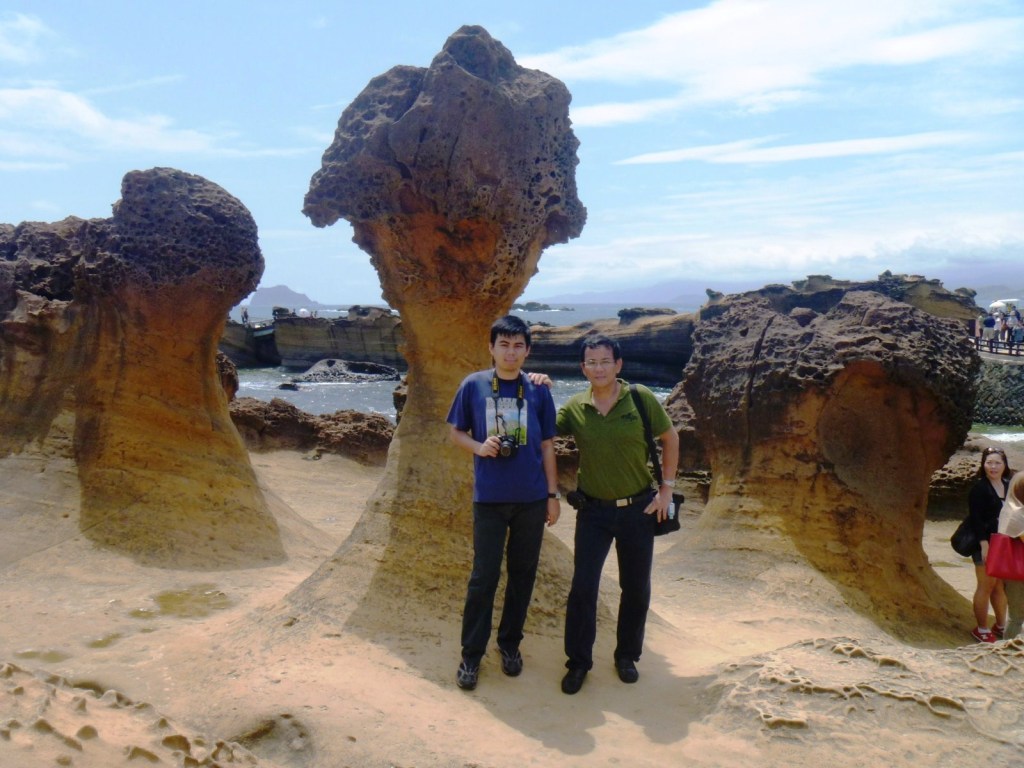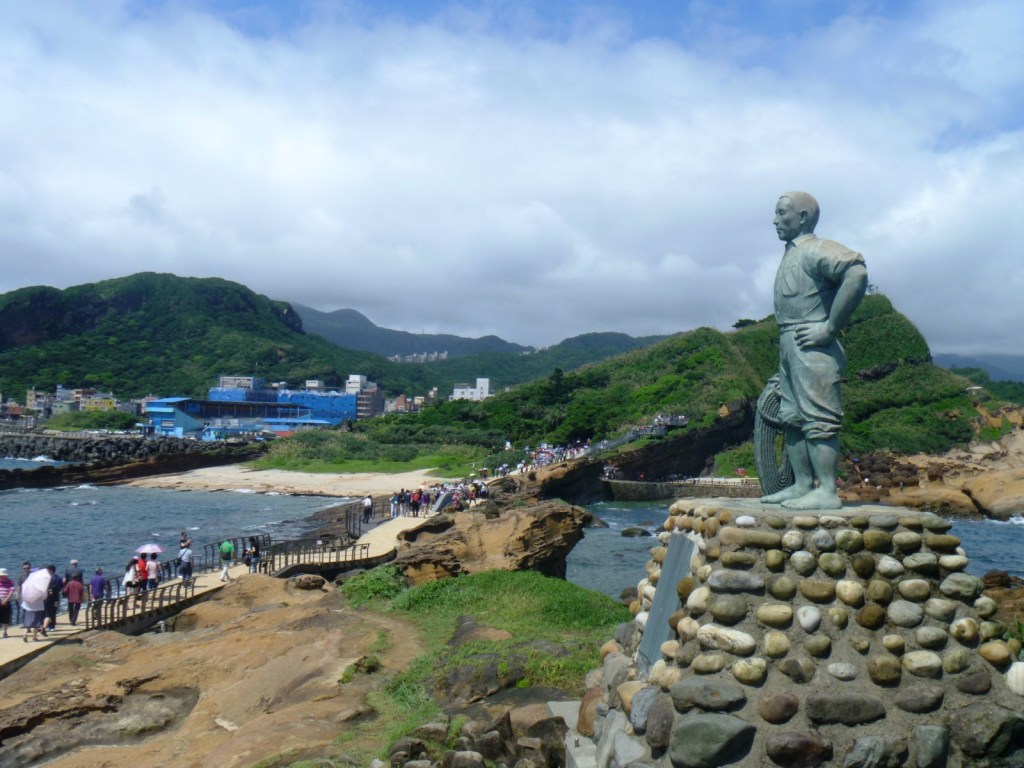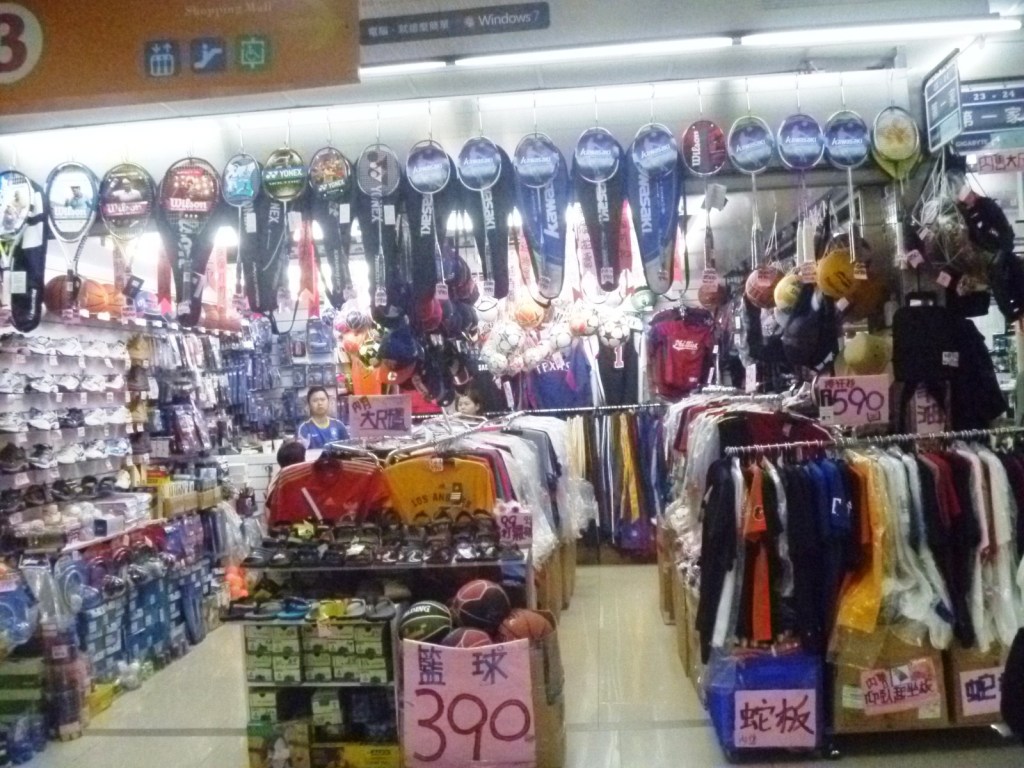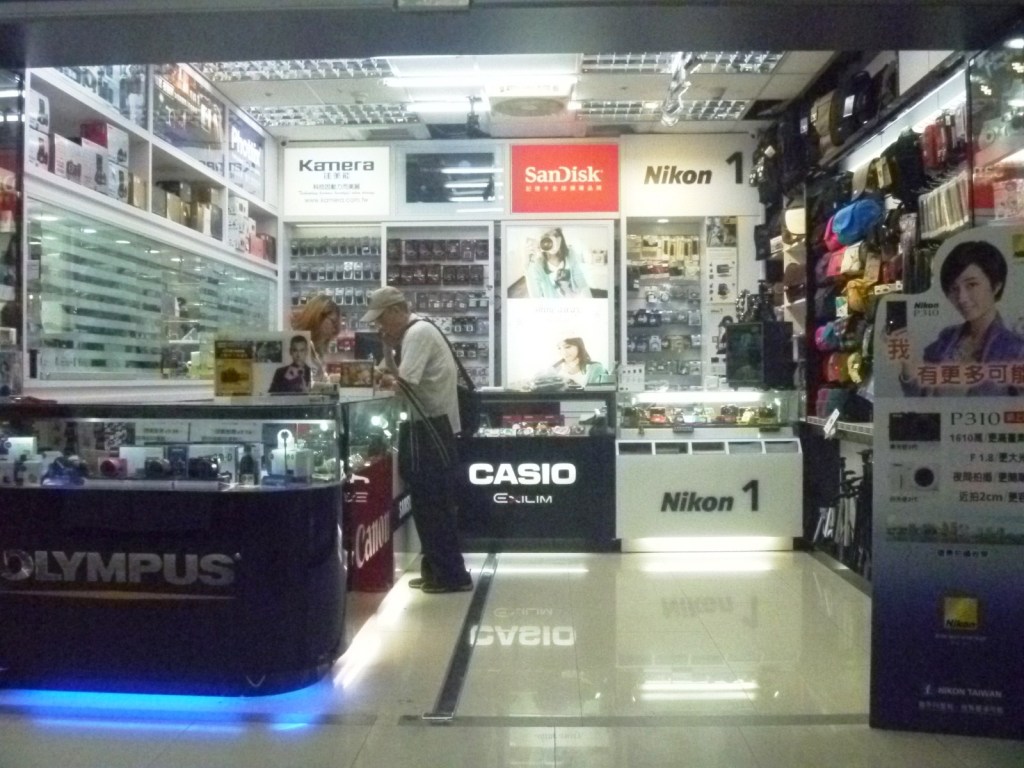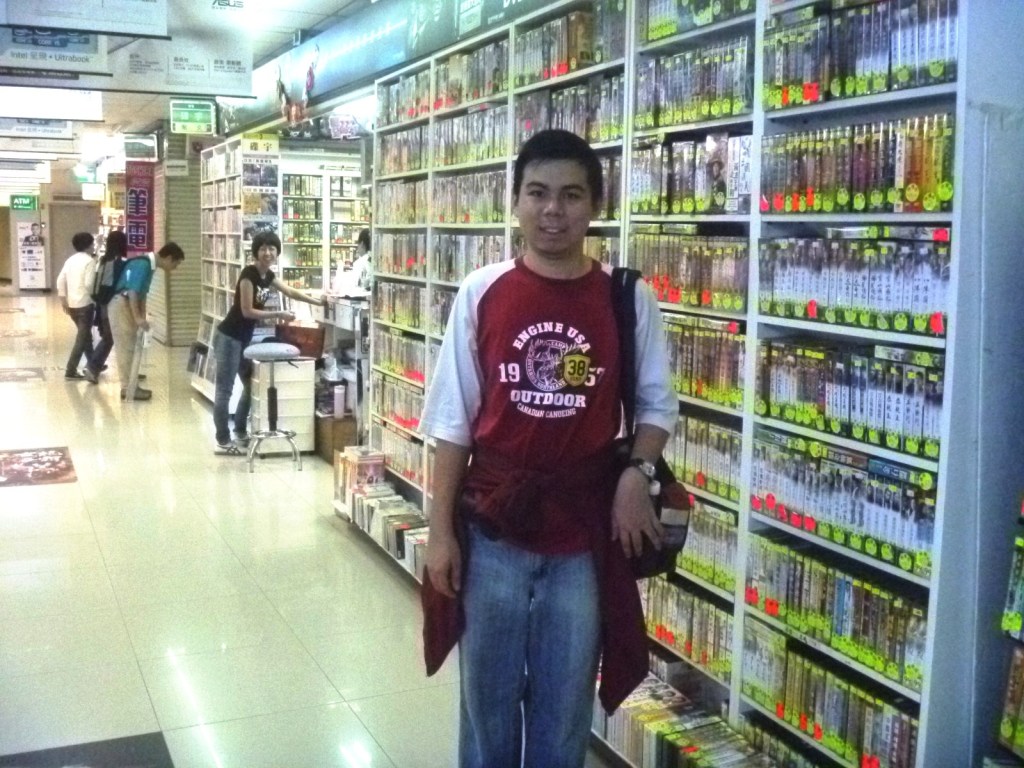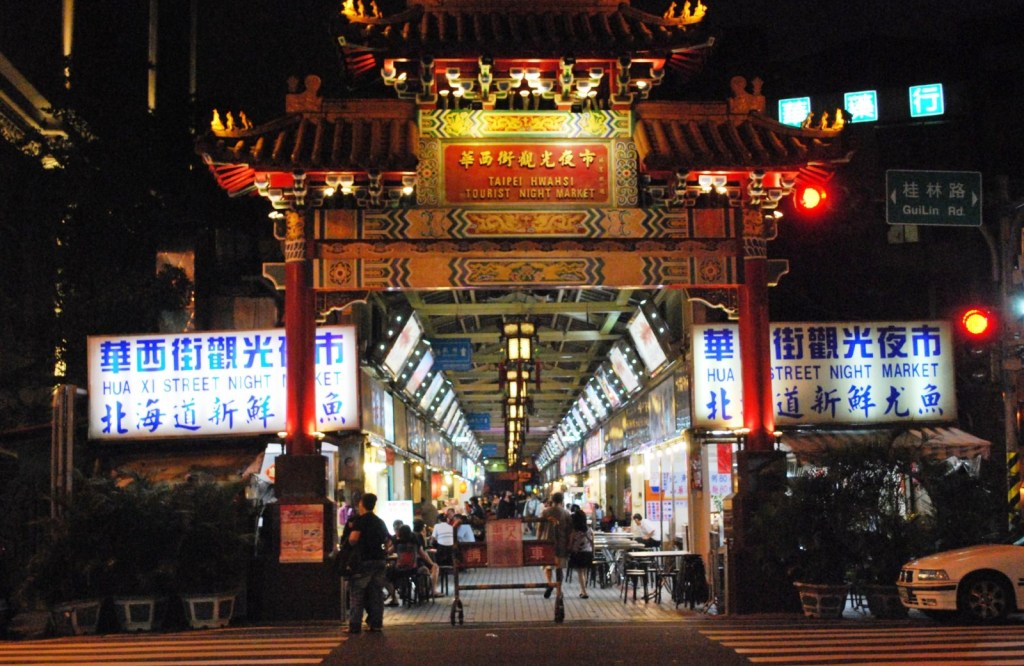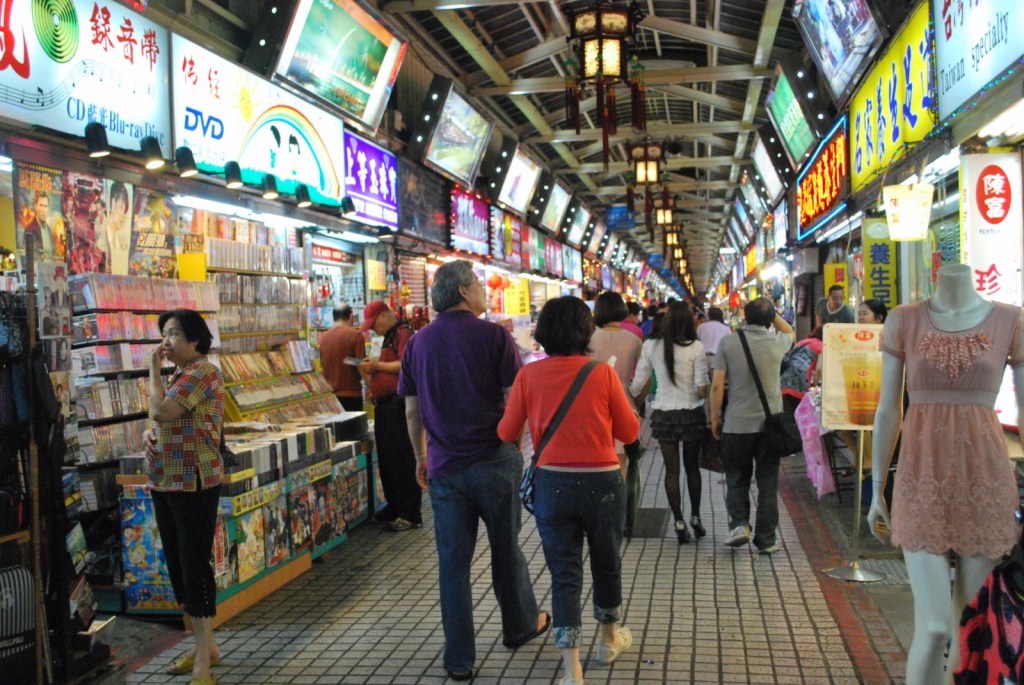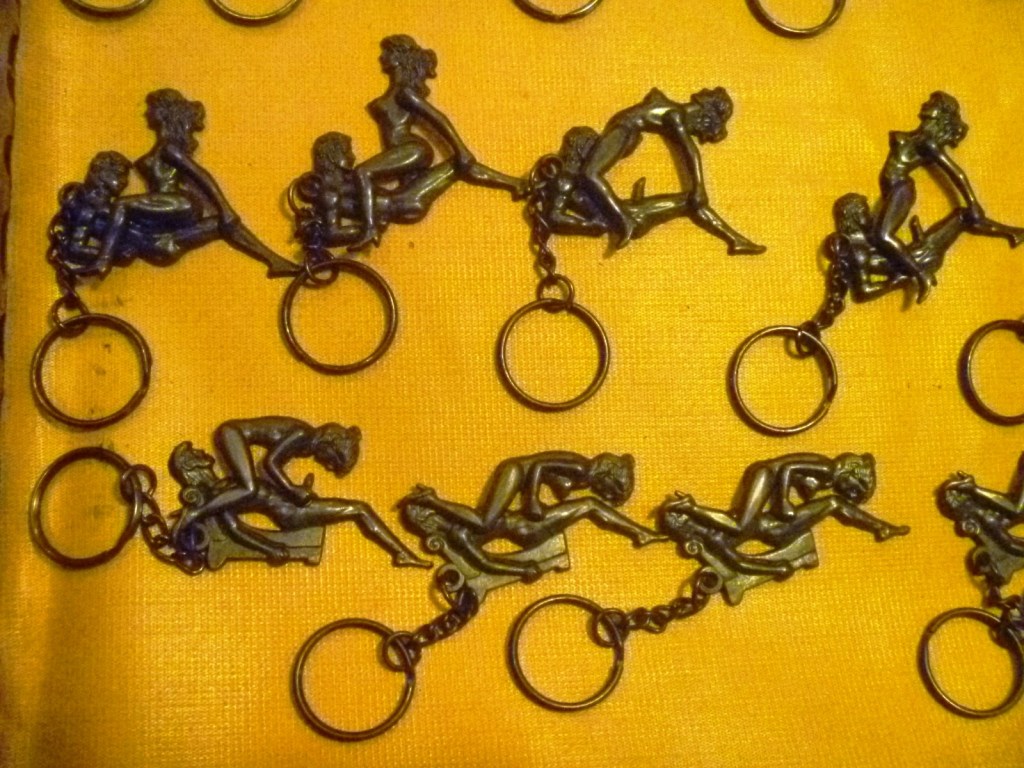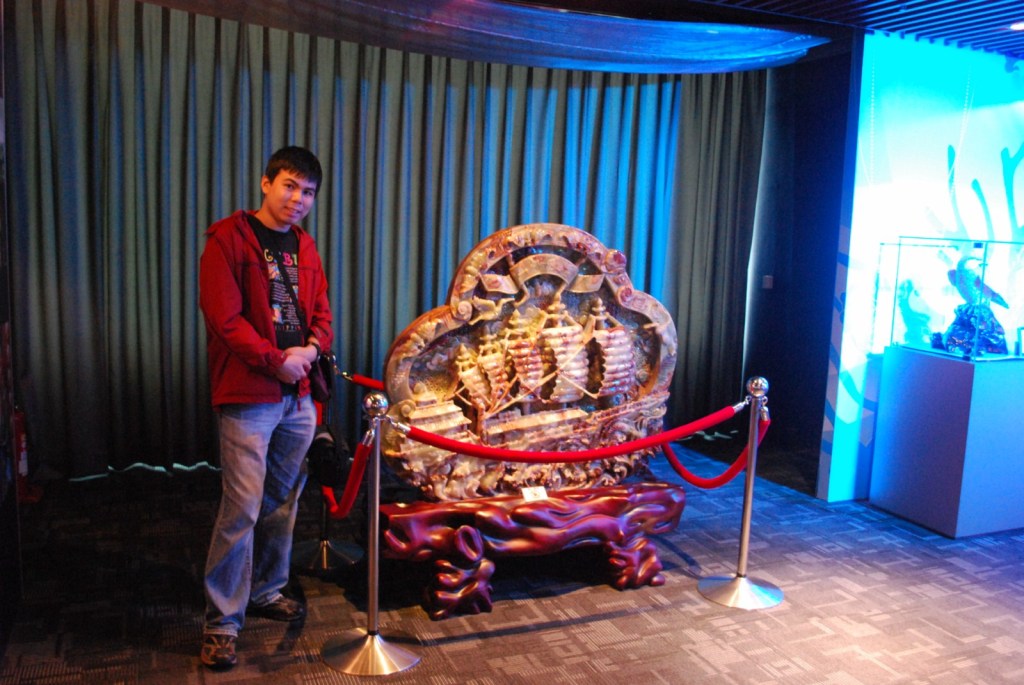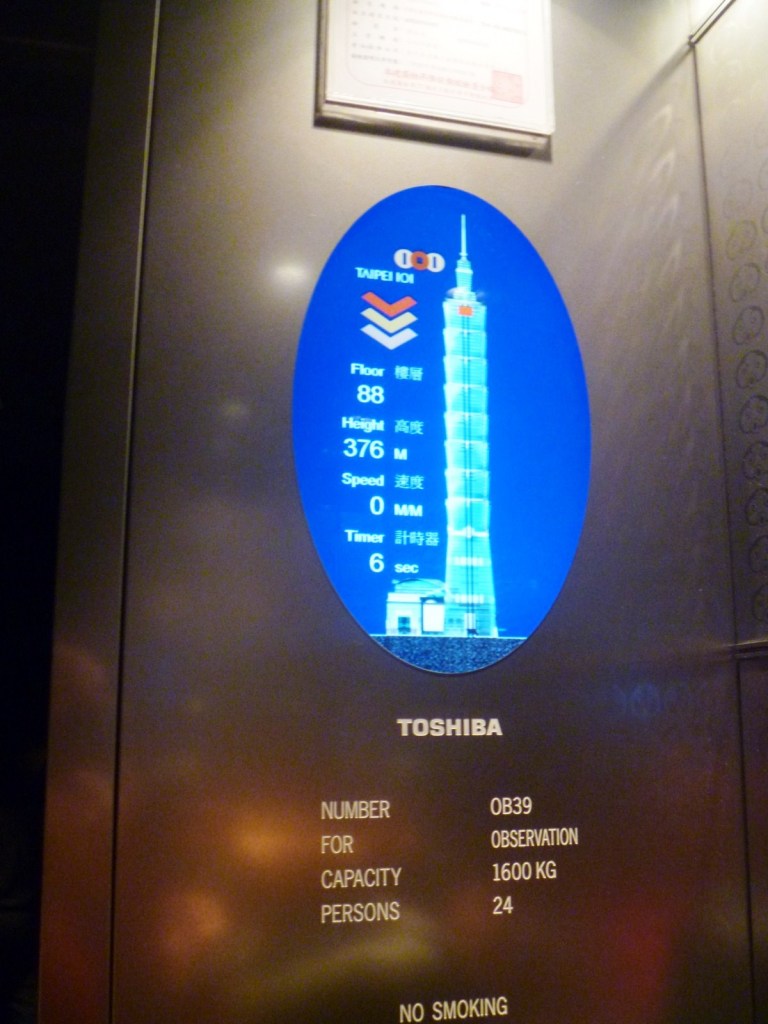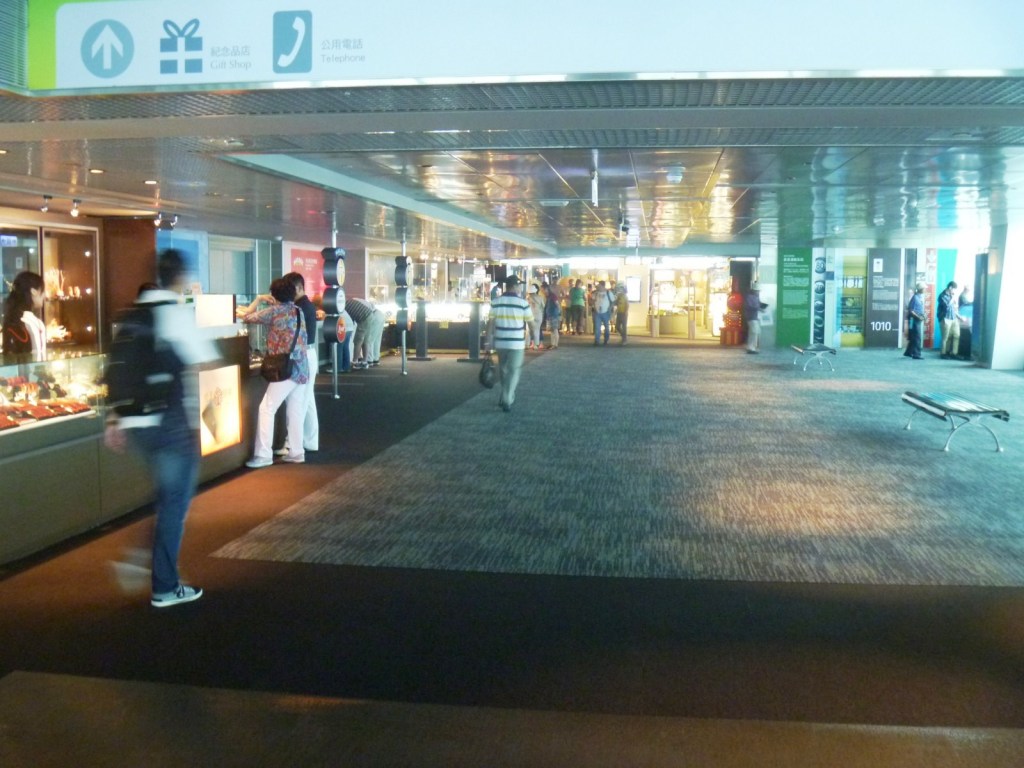Along our way to Lake Bulusan, Bernard, Philip and I decided to visit Bayugin Falls in Brgy. San Francisco, one of Bulusan‘s eco-tourism attractions. We parked the SUV at the barangay chapel where we made a courtesy call on the barangay captain. That done, we proceeded on our hike. According to the barangay captain, the falls is just a 500-m. hike. Initially the trail, along slippery but hard-packed mud, was relatively flat. Halfway through the hike, we crossed a wooden footbridge over a very narrow, steep-sided creek which, according to Philip, is a possible fault line.
| Philip at the wooden footbridge |
Past the bridge, the trail eventually became steeper as we neared the falls, we having to go down steps carved along the hillside. This descent really made my knees shake. After 20 mins., the sound of onrushing waters heralded our arrival at the falls. What a magnificent falls it was! The falls, surrounded by a thick, mossy forest, is the source of the Bayugin River which eventually joins the Paghasaan River as it flows into the Bulusan River. Now a popular swimming and picnic site, concrete picnic tables, a bamboo viewing deck and narrow plank bridges have been installed.
| Bayugin Falls |
Though we didn’t bring any swimming attire, Bernard couldn’t resist dipping his legs at the cold, onrushing waters. We lingered at the falls for a cool 20 mins., savoring the sights and sounds and recording it all via camera. The ascent, on our return, though short, was just as tiring. Thus refreshed, we returned to our vehicle and continued on our way to Lake Bulusan.
| The bamboo view deck |
Bayugin Falls: Brgy. San Francisco, Bulusan, Sorsogon.
How to Get There: Brgy. San Francisco is a 20-min. tricycle ride from the town proper.

